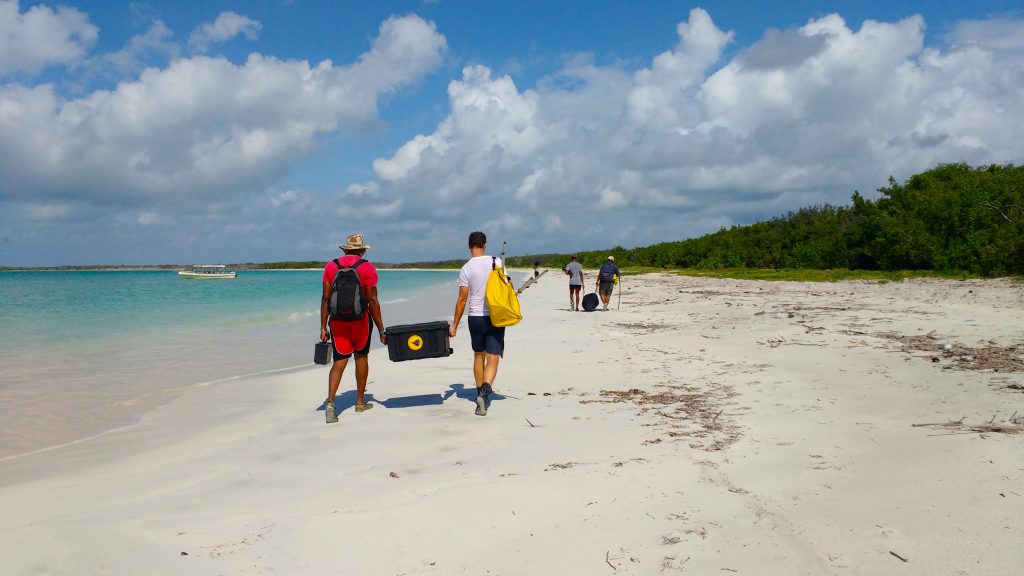Hunting Paleo-Fires in Jamaica
by Dana MacDonald
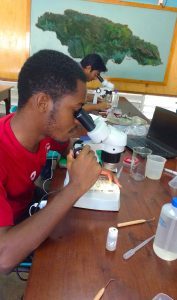
Students learning how to identify macro charcoal.
The University of the West Indies (UWI) – Mona Campus Kingston Jamaica hosted a two-day workshop on identifying and analyzing macro-charcoal from sediments to characterize past fire regimes on May 3rd and 4th, 2017. Two days were devoted to exploring techniques and research tools from past efforts to reconstruct paleo-fires in New England and Florida, and explored future research possibilities in the Caribbean.
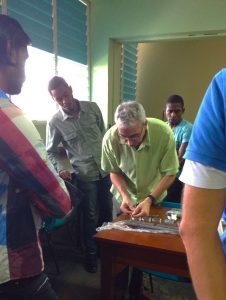
WHOI’s Coastal Systems Group research associate, Dana MacDonald, demonstrates how to subsample a sediment core for charcoal analysis.
The workshop was co-taught by Dr. Michael Burn, Lecturer in Climatology, Department of Geography and Geology, UWI and Dana MacDonald, Research Associate Woods Hole Oceanographic Institution and Research Fellow, Department of Geosciences, University of Massachusetts – Amherst.
The event was attended by about 20 graduate and undergraduate students, faculty, and staff. Lectures and discussions were integrated with lab periods to subsample sediments for charcoal, extraction of samples with sieving, and
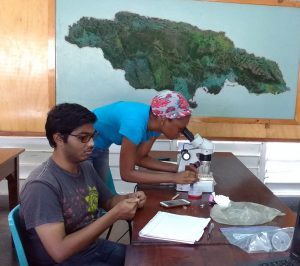
Students practice their new skills by identifying macro charcoal.
identifying macro-charcoal and other macro-fossils in sediment samples using stereo light microscopy. Examples of past research were discussed in the context of their climates, landscapes and sediment records, and students uploaded, troubleshot, and ran a test data set with CharAnalysis, a macro-charcoal analysis software.
Sediment cores from one of the example sites, a lagoon adjacent to Manatee Bay, St. Catherine Parish, were scanned to identify the utility of using macro-charcoal in these saline back-barrier beach lagoons. These cores may hold a fire record for one of Jamaica’s rarest dry sub-tropical forest types, and additional paleo-ecological records for one of the largest areas of undisturbed sub-tropical dry forest in the Caribbean. The workshop was followed by field work originating from the Port Royal Marine Laboratory UWI to several lagoons at Manatee Bay, scouting for areas to conduct seismic sediment profiling, and reconnaissance of the dry forest of the Hellshire Hills.
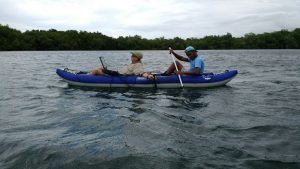
Seismic surveying of St. George’s Lake, Jamaica. Dana makes it look easy, even as he holds the instrument off the side of the boat.
Additionally, seismic sediment profiling was undertaken at St. George’s Lake, St. Ann Parish, exploring for a Pleistocene length paleo-climate record for the north-coast of Jamaica to compliment sediment records taken from nearby Discovery Bay and Shark Pond in 2016.
The workshop and field research was supported by the Department of Geography and Geology, UWI – Mona Campus, and the Port Royal Marine Laboratory with the gracious help of Drs. Michael Burn and Suzanne Palmer. Additional support was also provided by the University of Massachusetts – Amherst 2017 Research Support Fund, Associate Dean Sally Powers, and Dr. Jeffery Donnelly of the Coastal Systems Group, Woods Hole Oceanographic Institution. Photos: Dr. Michael Burn, Lecturer in Climatology and Dr. Suzanne Palmer, Lecturer Coral Reef Ecology, University of The West Indies – Mona

